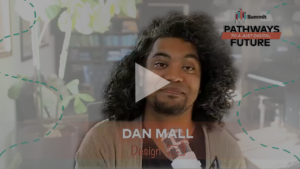Registration Kiosk Utilization
How do we get patients to utilize kiosks for registration?
As an Organization, we believe that the use of kiosks for patient registration will increase patient satisfaction, decrease wait times, and decrease cost (due to a potential reduction in reliance on registrars). However, we have struggled with patient adoption for a variety of reasons (examples include: some patients prefer to speak directly to a person for registration purposes; some have multiple appointments and worry that clinical staff won’t know that they have arrived for each, etc). While we are working on these and other issues, I was wondering if anyone is experiencing great success in patient adoption and, if so, what level of adoption you are seeing. What obstacles did you overcome to reach that level of utilization? Were there certain clinic settings that you found kiosk adoption to be more likely than others? Any help is appreciated. Thanks!




Thanks for sharing this post as our inaugural blogger! I am interested to hear what other MHCD participants who have actually initiated similar efforts in their organization have experienced on the issue of self-service kiosks. The experience of the airline industry–where such kiosks have become common place, even for complex travel transactions (which are still admittedly less complex than many medical transactions)–may also provide some interesting experience from another customer-service setting. Finally, you might want to take a look at the following academic paper on self service, co-authored by no other than our own Professors Buell, Campbell and Frei: http://www.hbs.edu/faculty/Pages/item.aspx?num=40014. It is written for an academic audience, but the insights may be worth considering.
We have recently implemented registration patient kiosks at our hospital (Hospital CIMA, Barcelona) as a way to improve patient satisfaction (convenience, reduction in waiting lines, for example) and increase operational efficiency (OE).
Some of the highlights of this experience at our hospital have been:
1. The need of these kiosks to be integrated in the overall hospital IT-digital strategy.
2. Functionality:
Multi-lingual.
Ease of use.
Privacy guarantee.
Begin the implementation with basic functions.
Greeter to explain the basic kiosk´s functionality.
3. Location:
We have installed two kiosks at those hospital departments with most returning patients (pediatrics, oncology).
* Constant monitorization of how patients are using our kiosks is allowing us to make continuous adjustments to both software & hardware in order to achieve the targeted goals of patient satisfaction, OE and operational integration.
We do use self registration kiosks at our outpatient clinics and physiotherapy; patient adoption is varied and is still an issue.
Initially it was the matter of helping the patients understand how to use and being a small community we overcame that challenge very soon as consumers educated others.
Our main challenge is that the consumers still like talking to a person and are not really interested in automated kiosks.
Few reasons were:
1. people are elderly and not very keen on adopting newer technology.
2. Some of the people were just disruptive and broke/ damaged the kiosks.
3. People just ignored them as if they were not visible to them
I am also interested in knowing more on this topic.
We have piloted this and hope to increase its utilization, however like you have found that the more complex the medical visit the less likely the patient is to be comfortable with the kiosk. For routine or simple visits (e.g. lab draws, f/u visit, chest x-ray) is can help with registration, but if the patient has multiple visits on the same day, or many questions, or a complex issue , it has not been of much help.
We have implemented two registration kiosks at the main entrance (1) and before the registration nurse (1). The utilization rate is still low 20%. We have now hired a spesial worker to advise the patients how to use the kiosks. It is special challenging, when the patient have many different medical visits at the same day. I think that after hiring a new employee, the utilization rate is increasing.
The software should be easy to use, it should identify the patient barcode, it should advise the patient and it should also print important materials.